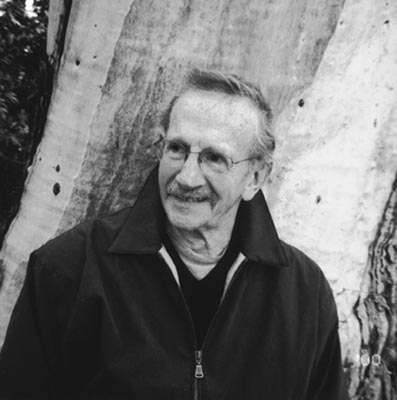Philip Levine’s Latest Collection, Breath

Some days I catch a rhythm, almost a song in my own breath. -Philip Levine, from “Call it Music” in Breath
The Inuit root word anerca means both to breathe and to make poetry. In April, National Poetry Month, we celebrate the visit of one of our most brilliant, wise, and prolific poets, Philip Levine, with his latest book, Breath (Alfred A. Knopf, 2006). Levine is the featured guest for the Santa Barbara Writers Conference’s second spring poetry conference, this year to be held March 28-30. “I think poetry is a much larger part of our lives than popular culture indicates,” said SBWC’s executive director, Marcia Meier. Levine’s chosen theme is “Imaginary Cities with Real People in Them,” and I emailed him to ask about its genesis. He referred me to the witty, cryptic poet Marianne Moore (1887-1972), who in her poem “Poetry” advises that to increase interest in the art, poets should strive for the genuine: “imaginary gardens with real toads in them.”
Levine has been a guest at SBWC twice before-in 1988 and 1992-and I had the pleasure of introducing him both times. Looking over my old notes, I found a comment he made in 1988: “Poetry comes out of a need to pay homage.” Levine has paid homage particularly to the working class over the course of his long career. He has published 20 collections of poetry and won numerous awards, including the Pulitzer Prize in 1995 for The Simple Truth, The National Book Award in 1991 for What Work Is, the National Book Critics Circle Award for Ashes: Poems New and Old (1979), and the Lenore Marshall Poetry Prize for The Names of the Lost (1975).
David Kipen of the San Francisco Chronicle writes of the poems in Breath that they are “a stinging evocation of people and places Levine has known, and of the bittersweet distance he’s traveled since he first knew them.” An excerpt from the long poem “Naming” reflects Levine’s great talent for capturing “real people” in cities remaining in memory:
Always there was music, Clifford and Max
one month, Miles the next, Lester Young
near the end, half sober, the high off-
center wail of the horn like a
voice heard before he heard voices.
On the Saturday singalong from the Met
in the back of D’Angelo & Ferente’s
French Cleaners & Fine Alterations,
the tiny Sicilian coat maker
on tiptoe to reach the high notes
along with Bjrling. Della Daubien
on the crosstown streetcar as dusk
rises from the trees. If you go back
you’ll hear her rough alto echoing
down the bombed-out streets of heaven.
Levine, who has taught poetry for many years at California State University, Fresno and elsewhere, is praised as a master teacher who has instilled a love of the art in countless students. About writing poetry he once wrote, “Let your eyes transform what appears ordinary, commonplace, into what it is, a moment in time, an observed fragment of eternity.” We are fortunate to have him in our presence again.
The Poetry Conference will include a variety of workshops and seminars taught by poets Christopher Buckley, Marilyn Chandler McEntyre, Ellen A. Kelley, Lois Klein, Perie Longo, Barry Spacks, David Starkey, Paul Willis, Chryss Yost, and Gary Young. For registration and information, call 964-0367 or visit sbwritersconference.com.
Speaking of paying homage to “real people,” mark your calendars for April 3, from 6:30-7:30 p.m., an evening of original poetry by the photographers whose work is featured inEssential Workers, now on display at the County Administration Building (105 E. Anapamu St.). On Thursday, March 27, all poets are welcome to read their work at an open mike night at Good Cup Coffee (1819 Cliff Dr.) from 6:30-8 p.m. And on Wednesday, April 2, from 3:30-4:30 p.m., seniors will read poems inspired by the photographs of Paul Caponigro’s exhibit, Meditations in Silver, at the Santa Barbara Museum of Art. Keep reading, keep writing, and don’t forget to breathe.



